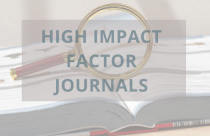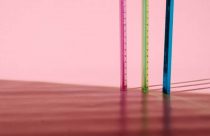Eigenfactor Vs. Impact Factor: How Are They Different?

Eigenfactor and impact factor are two widely used measures of a journal’s value. However, they measure two different factors and cannot be used interchangeably.
Eigenfactor: How Many People Read this Journal?
Although the calculation is complicated, a journal eigenfactor is basically a measure of how many people read a journal and think its contents are important. Since this cannot be directly calculated, it is measured by counting the total number of citations a journal receives over a five-year period. Note that eigenfactor measures the total number of citations. Therefore, journal A, which publishes 1000 articles a year, will have twice the eigenfactor of journal B, which puts out 500 articles annually, if each article is cited the same number of times.
Eigenfactor is meant to measure the importance of a journal throughout the scientific community and rewards large journals that publish a variety of topics. It’s no surprise that the journal Nature, a large journal which publishes on pretty much everything in science, has the highest eigenfactor. But this is true only because its contents are considered valuable and are much read and cited.
Impact Factor: How Many People Read My Article?
In contrast, a journal impact factor measures how many citations an individual article receives on average if published in a certain journal. Thus it is an indirect measure of how many people read an article and think it’s important. Here journal A and journal B may have identical impact factors even though their eigenfactors differ by a factor of two. But suppose the two journals had the same eigenfactor. Now the smaller journal has twice the impact factor, suggesting that either it has more readers or that readers consider its contents to be of higher quality than the bigger journal.
Which Metric to Use?
It seems to me that a measure of citations per article is a more useful metric for an individual researcher to consider when choosing a journal to submit to. A library may be more interested in a journal’s overall importance (so as to know which ones to stock) but a researcher wants to know how many people will read his particular article and think it’s important. Impact factor attempts to measure this; eigenfactor does not. This does not mean that every researcher should submit every article to Nature. Statistical metrics must be used with care. An article on the kinetics of nitroglycerin decomposition might be ignored by the readers of Nature but have an avid following in Propellants, Explosives, and Pyrotechnics. Each article has an ideal target journal and impact factor won’t tell you what it is. The most it can do is help make a choice between two journals that seem equally suitable.










Its required and useful
Greeting from Enago Academy! Thank you for your positive comment. We are glad to know that you found our resources useful. Your feedback is very valuable to us. Happy reading!